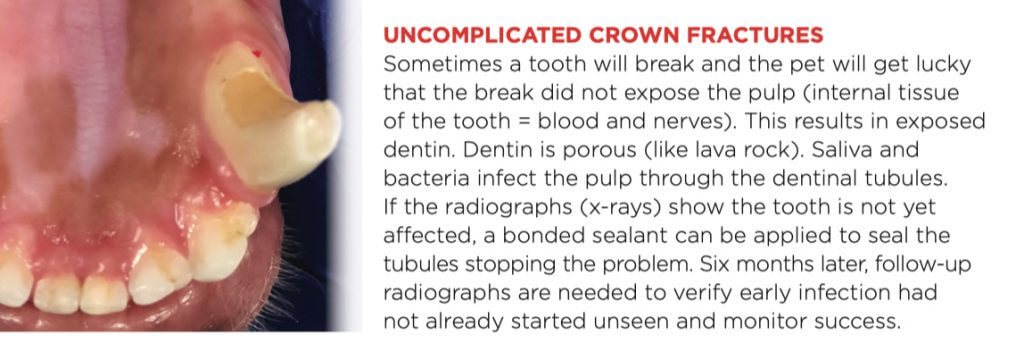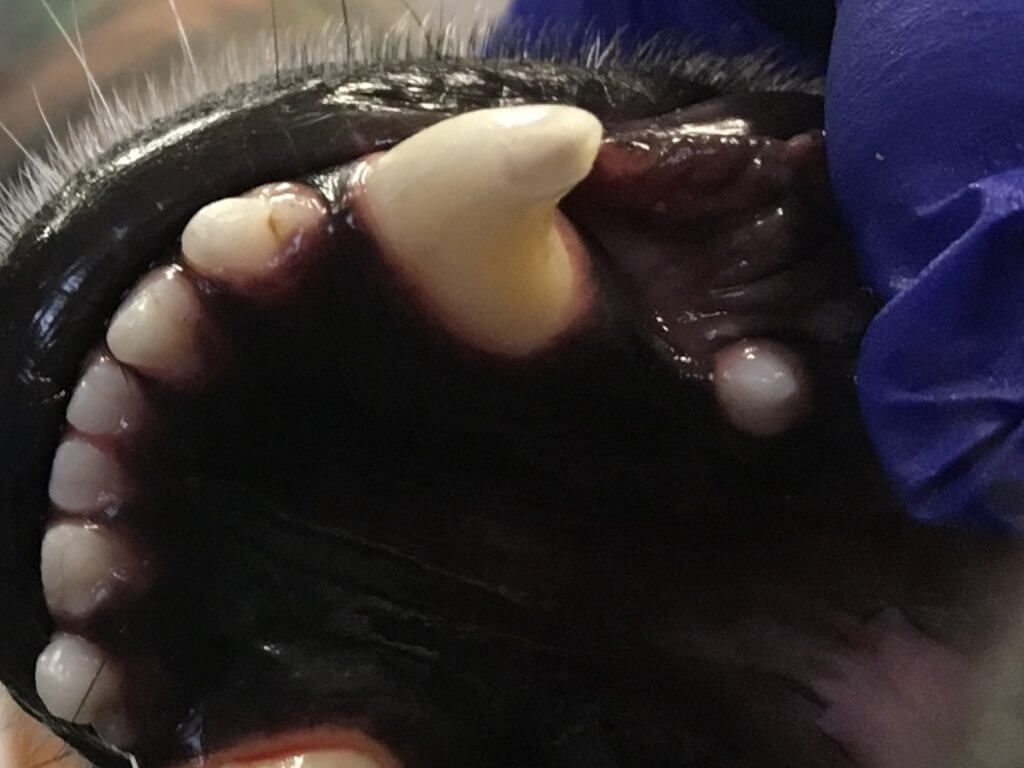As described in a recent post, dental conditions are often hidden and painful. The following posts are going to help describe conditions that pets can get as well as treatment. Many people I talk with are surprised how we can help pets with dental conditions and save teeth whenever possible.

Tooth fractures are one of the most common dental problems seen in dogs. These fractures can be complicated (involving the pulp which is the center tooth nerves and blood vessels) or uncomplicated (break usually removing enamel, exposing dentin, but not pulp). Bones, antlers, hooves and anything without flex can break teeth. The FDA even put out a warning to this effect. Chewing on bones breaks teeth. Appropriate chews and toys are any object with flex. If your fingernail can indent the object, it’s okay. It’s even been reported for ice cubes to break teeth. In some cases, chewing is happening on objects such as kennel bars and other items that cannot be taken away. A lucky pet will have the dentin exposed but not pulp. Dentin exposure is painful. The odontoblastic processes (nerve endings) are exposed to fluid from the mouth. In addition to this pain, there is risk of infection.
To seal the tubules and improve cosmetics, a restoration can be performed.
On x-ray this recent tooth fracture was fine for the moment:

So a restoration was place to seal the dentin, stopping pain and new infection.

Because the trauma that caused the uncomplicated crown fracture may actually cause irreversible pulpitis or bacteria may already be in the dentin but has not shown up as infection, intraoral x-rays under anesthesia are needed in 6 months, then every 12 months there after. As every pet needs at least annual dental preventative care, the every 12-month evaluation should not be a problem. X-ray changes can lag behind disease occurrence by 4-6 months, as there must be enough mineral change to see the problem on x-rays.
Occasionally the body can form reparative dentin. Waiting for this to happen is not a good idea, but should a darker area that is not soft when pressed with a sharp shepherd’s hook probe be present, treatment of the uncomplicated crown fracture is not needed. X-rays to get a ‘snapshot’ of tooth health under the gumline is still needed.
Sometimes living/vital teeth are crowned to repair the damage and wear from kennel bars and/or uncomplicated crown fractures and give added strength for likely continued chewing.
Contact us to learn more about restorations and crowns for your pet.
